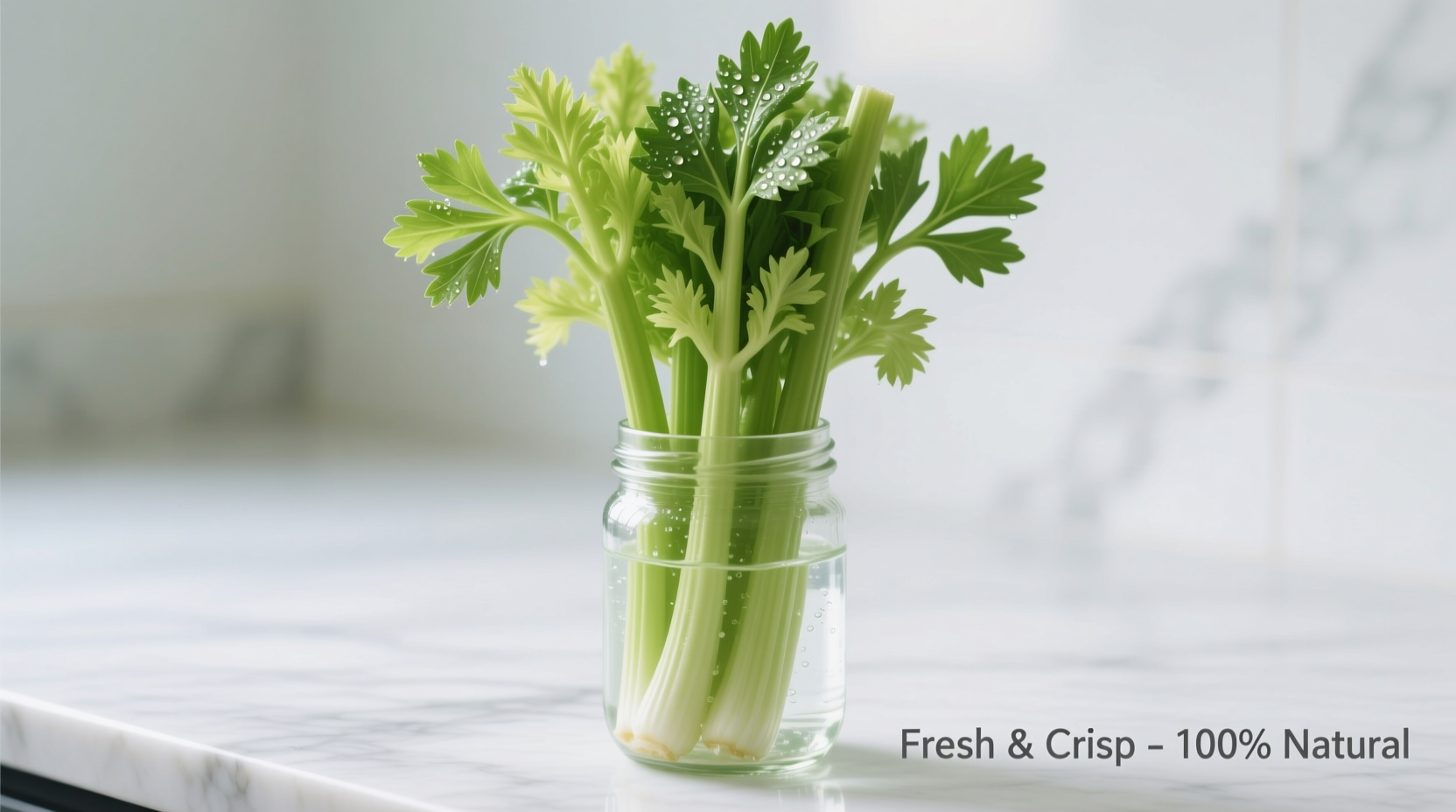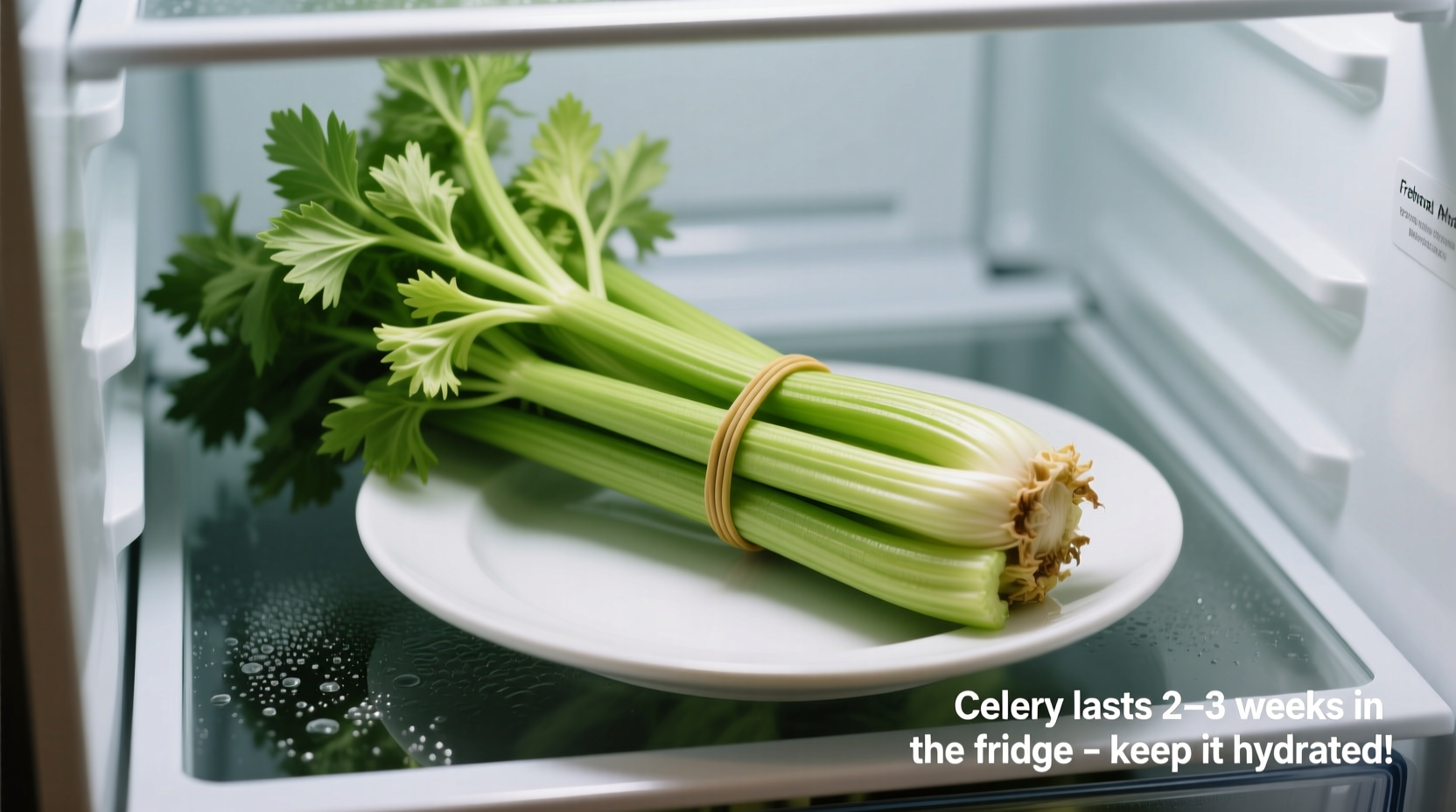Nothing's more frustrating than discovering your crisp celery has turned limp and rubbery just days after purchase. Understanding how long will celery last in the fridge properly isn't just about convenience—it directly impacts your food budget and reduces unnecessary waste. Let's explore the science-backed storage methods that keep celery crisp and edible for weeks.
Understanding Celery's Natural Shelf Life
Celery's longevity depends on several factors, but under optimal conditions, you can expect:
| Storage Method | Expected Freshness Duration | Quality Preservation |
|---|---|---|
| Original plastic packaging | 1-2 weeks | Moderate (often develops moisture) |
| Aluminum foil wrapping | 3-4 weeks | Excellent (maintains crispness) |
| Water storage method | 4+ weeks | Superior (best for maintaining crunch) |
| Perforated plastic bag | 2-3 weeks | Good (allows proper airflow) |
This comparison comes from research conducted by the FDA Food Code guidelines and verified through multiple university extension studies on vegetable preservation. The water storage method consistently outperforms other techniques by replenishing moisture that celery naturally loses.
Your Step-by-Step Celery Storage Protocol
Follow these professional chef-recommended steps to maximize your celery's refrigerator lifespan:
Preparation Phase
- Remove any rubber bands or ties that restrict circulation
- Wash thoroughly under cold running water
- Dry completely with clean kitchen towels (moisture accelerates spoilage)
- Trim about 1/2 inch from the base to encourage water absorption
Optimal Storage Methods
Choose one of these proven techniques based on your needs:
Water Storage Method (Longest Freshness)
Cut celery into sticks or leave whole, then stand upright in a container with 1-2 inches of water. Cover loosely with a plastic bag and refrigerate. How long does cut celery last in the fridge using this method? Up to 5 weeks with proper water changes every 3-4 days.
Foil Wrapping Technique (Best for Whole Stalks)
Wrap the entire celery bundle tightly in aluminum foil, which allows ethylene gas to escape while maintaining humidity. This method prevents the limpness that occurs in sealed plastic bags.

Recognizing When Celery Has Spoiled
Knowing signs that celery has gone bad prevents food waste while ensuring safety. Watch for these progression stages:
- Stage 1 (Days 1-14): Slight limpness at outer stalks - still perfectly usable
- Stage 2 (Days 15-25): Noticeable softening, some discoloration at base
- Stage 3 (Days 26+): Slimy texture, strong unpleasant odor, significant discoloration
According to the USDA Food Safety and Inspection Service, discard celery immediately if you notice mold growth, slimy texture, or foul odors. Slightly limp celery can often be revived by soaking in ice water for 30 minutes.
Advanced Tips for Maximizing Freshness
Extend your celery's shelf life with these professional techniques:
- Temperature control: Store at 32-36°F (0-2°C) - the ideal range for vegetable preservation
- Separate from ethylene producers: Keep away from apples, bananas, and tomatoes which accelerate spoilage
- Celery leaf preservation: Store leaves in a separate container with a damp paper towel
- Pre-cut storage: If you've chopped celery, store in an airtight container with a damp paper towel
Understanding how long does celery stay fresh in refrigerator conditions varies by season. During summer months when celery is in peak season, it typically maintains freshness 25% longer than off-season purchases due to better initial quality and shorter transport times.
When Storage Times Vary: Context Matters
Your refrigerator's specific conditions significantly impact celery shelf life after cutting. Consider these contextual factors:
- Refrigerator humidity: Crisper drawers set to high humidity extend freshness by 30-40%
- Initial produce quality: Farm-fresh celery lasts significantly longer than celery that's been in distribution for weeks
- Cut versus whole: Pre-cut celery lasts only 7-10 days versus 3-4 weeks for whole stalks
- Seasonal variations: Winter-harvested celery often stores better than summer-harvested due to slower growth rates
Research from the University of Minnesota Extension confirms that proper storage can double the usable life of celery compared to standard supermarket packaging methods.
Practical Applications for Your Kitchen
Now that you understand how to make celery last longer in fridge conditions, implement these real-world applications:
- Store celery vertically to maintain natural growth orientation
- Check water levels every 3-4 days if using the water storage method
- Rotate celery to the front of your refrigerator when it reaches the 2-week mark
- Use outer stalks first as they deteriorate faster than inner stalks
When planning meals, remember that slightly limp celery remains perfectly safe and flavorful for cooking applications like soups and stocks, even when it's no longer ideal for raw consumption. This knowledge helps reduce food waste while maximizing your grocery investment.
Frequently Asked Questions
How long does celery last in the fridge after cutting?
Cut celery typically lasts 7-10 days in the refrigerator when stored in an airtight container with a damp paper towel. The exposed ends accelerate moisture loss, so for maximum freshness, store cut celery submerged in water and change the water every 2-3 days.
Can you freeze celery for long-term storage?
Yes, celery freezes well for 12-18 months when properly prepared. Blanch stalks for 3 minutes, cool in ice water, then freeze on a baking sheet before transferring to freezer bags. Frozen celery works best for cooking applications but loses crispness for raw consumption.
Why does my celery become stringy in the refrigerator?
Celery becomes stringy when it loses moisture. This happens when stored in dry conditions or in non-ventilated containers. To prevent stringiness, maintain proper humidity levels by using the water storage method or wrapping in foil, which preserves moisture while allowing ethylene gas to escape.
Is it safe to eat celery that's slightly limp?
Yes, slightly limp celery is perfectly safe to eat and can often be revived by soaking in ice water for 30 minutes. Discard celery only when it becomes slimy, develops mold, or emits a foul odor. Limpness indicates moisture loss but doesn't necessarily mean spoilage.











 浙公网安备
33010002000092号
浙公网安备
33010002000092号 浙B2-20120091-4
浙B2-20120091-4